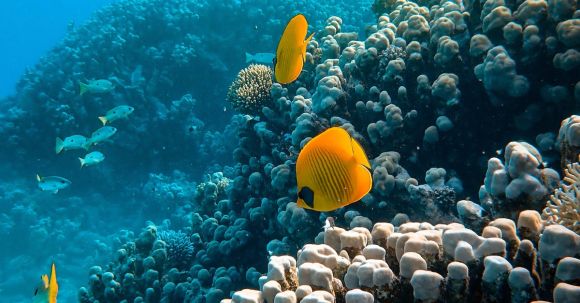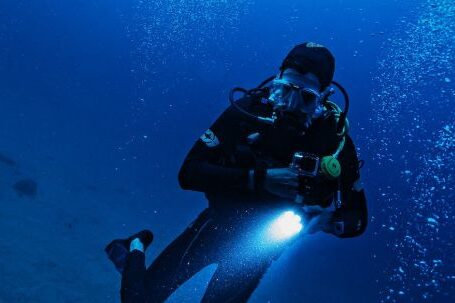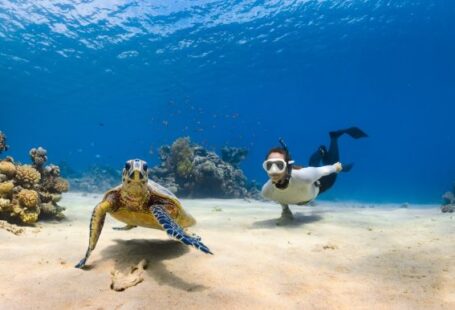Coral reefs are fascinating ecosystems teeming with life and vibrant colors. Beneath the crystal-clear waters, a hidden world of creatures awaits discovery. These creatures have evolved remarkable adaptations that allow them to survive and thrive in this challenging environment. Let’s delve into the depths and explore the unique adaptations of the hidden creatures of coral reefs.
Camouflage: Masters of Disguise
One of the most intriguing adaptations found in coral reef creatures is camouflage. Many species have developed the ability to blend seamlessly with their surroundings, making it difficult for predators and prey alike to spot them. From the brilliantly colored fish that mimic the coral they inhabit to the octopus that can change its skin texture and color to match its surroundings, these creatures have mastered the art of disguise.
Bioluminescence: Nature’s Light Show
In the depths of the ocean, where sunlight barely reaches, bioluminescence becomes a vital adaptation for many coral reef inhabitants. Bioluminescent organisms have the ability to produce their own light, which they use for various purposes. Some use it to attract prey, while others use it as a defense mechanism to startle predators. Witnessing the mesmerizing light shows created by these creatures is truly a sight to behold.
Symbiotic Relationships: Partnerships for Survival
Coral reefs are home to a myriad of symbiotic relationships, where two or more species depend on each other for survival. One such example is the mutualistic relationship between coral and zooxanthellae. Zooxanthellae are tiny algae that live inside the tissues of coral, providing them with food through photosynthesis. In return, the coral provides a safe and nutrient-rich environment for the zooxanthellae to thrive. This mutually beneficial partnership is crucial for the survival and growth of coral reefs.
Extreme Adaptations: Thriving in Harsh Conditions
Coral reefs are not only beautiful but also harsh and demanding environments. Some creatures have evolved extreme adaptations to cope with these challenging conditions. Take, for instance, the clownfish, which has a mucus layer that protects it from the stinging cells of the anemone it calls home. Another remarkable example is the humphead wrasse, which has powerful jaws capable of crushing the hard shells of its prey, such as clams and sea urchins. These adaptations allow these creatures to thrive in an environment that would be inhospitable to most.
Predator-Prey Interactions: The Circle of Life
In the coral reef ecosystem, predator-prey interactions play a crucial role in maintaining the balance of the ecosystem. Many creatures have developed unique adaptations to increase their chances of survival. The mantis shrimp, for example, has incredibly powerful claws that can strike faster than the human eye can see, enabling it to capture its prey with lightning speed. On the other hand, prey species have evolved various defense mechanisms, such as venomous spines or the ability to release toxic chemicals when threatened. These adaptations shape the intricate web of life within coral reefs.
The Fragile Beauty of Coral Reefs
As we uncover the hidden creatures and their unique adaptations, it is important to remember that coral reefs are fragile ecosystems facing numerous threats. Climate change, pollution, and overfishing pose significant challenges to their survival. By understanding and appreciating the wonders of coral reefs, we can strive to protect and conserve these invaluable habitats for future generations.
In conclusion, the hidden creatures of coral reefs possess remarkable adaptations that allow them to thrive in their challenging environment. From camouflage to bioluminescence, symbiotic relationships to extreme adaptations, these creatures have evolved fascinating strategies to survive and fulfill their ecological roles. As we explore the depths of coral reefs, let us also recognize the need to protect and preserve these fragile ecosystems for the countless hidden wonders they hold.





